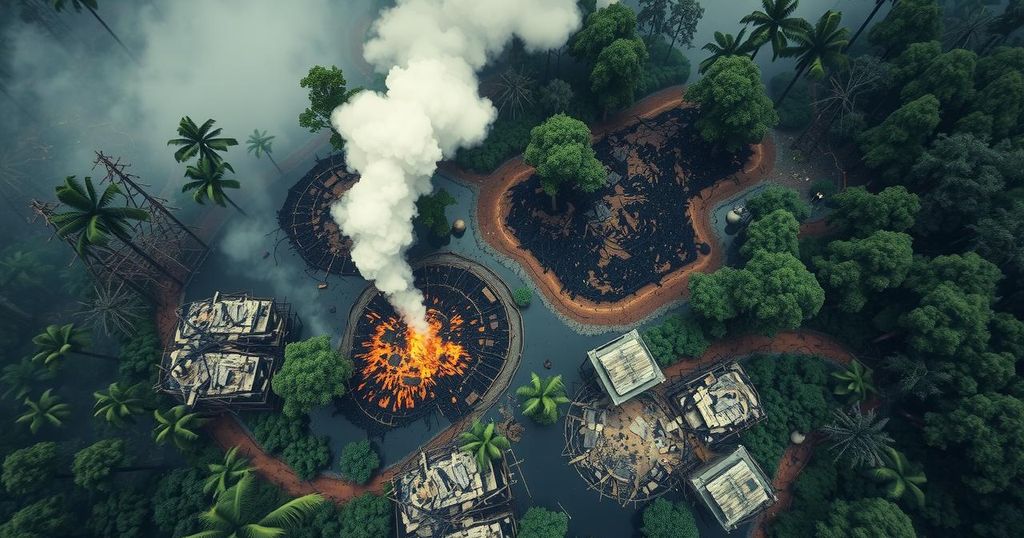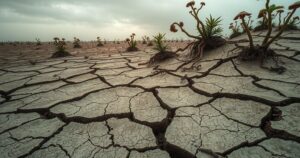Deforestation in the Brazilian Amazon Soared 92 Percent in May

Deforestation in the Brazilian Amazon experienced a dramatic increase of 92 percent in May 2024 compared to last year, driven largely by human-made fires and worsened by climate change. The Brazilian government has declared a nationwide environmental emergency as it seeks to combat this alarming trend through enhanced resources and innovative technologies. Experts express serious concerns about the Amazon’s future as deforestation continues without significant interventions.
In May, deforestation in the Brazilian Amazon surged an alarming 92 percent compared to the same month last year, according to the Portuguese news agency Lusa. Satellite images from Brazil’s space agency reveal that a staggering 960 square kilometers of rainforest were lost in May 2024, up from 500 square kilometers in May 2023. This alarming trend raises serious questions about the long-term viability of this crucial ecosystem.
Almost half of the devastation stems from logging (48 percent) and illegal mining (about 1 percent), but the majority — a striking 51 percent — is attributed to fires. João Paulo Capobianco, Brazil’s Minister of the Environment, highlights a crucial turning point: “The native forest, which was previously immune to fires, has started to change its profile.” He pointed out that climate change, fires, and decades of recurrent droughts have chipped away at this immunity, leaving the Amazon more exposed than ever.
Capobianco further expressed concern without declaring it a point of no return. “We are not talking about the point of no return or the collapse of the biome, but about the collapse of the burned area that was once forest.” Experts from non-profit organization Mongabay warn that if deforestation and carbon emissions do not see drastic reductions, the Amazon might soon transition into a savannah-like ecosystem.
The vast majority of fires are, in fact, human-made; they are often set to clear land for agriculture, cattle ranching, or illegally logging and mining activities that aim to cover illicit dealings or carve out access routes. Last year, Brazil lost an area equivalent to Italy due to fires, with over 30.8 million hectares charred in about 237,700 incidents, 58 percent of which occurred in the Amazon rainforest.
The situation has taken a turn for the worse as rainfall in the Amazon diminished by up to 70 percent last year, resulting in severe droughts that relegated some of the largest rivers to record-low levels. Consequently, these conditions, together with a 42.3 percent rise in fire incidents, contributed to a 66 percent increase in burned areas across the Amazon in 2024.
With fires set to further threaten the rainforest in 2025, the Brazilian government took action by declaring a nationwide environmental emergency back in February. This emergency allows for the swift allocation of additional resources to firefighting efforts and local governments while also boosting the hiring of fire brigades. Moreover, to combat slash-and-burn agriculture practices, tax incentives have been offered to landowners dedicated to preserving forest cover.
On the technological front, Brazil is making strides. The government is investing in new tools for predicting, monitoring, and tackling fires in the 4.1 million square kilometers of the Amazon. The Prevfogo Program, administered by Brazil’s environmental institute, uses satellite imagery and artificial intelligence to predict fire outbreaks and monitor environmental conditions. In two northern states, innovative firefighting drones are being trialed for early-stage fire detection and suppression, alongside research into fire-resistant tree species and soil treatment strategies.
Deforestation in the Amazon has reached crisis levels, exacerbated by human-made fires and climate change-related issues. The Brazilian government has responded with emergency measures to address these challenges, including resource allocation, tax benefits for land preservation, and technological innovations for fire management. Unless decisive actions are taken, experts warn that the Amazon could be on a trajectory toward a drastically altered ecosystem.
Original Source: macaonews.org





